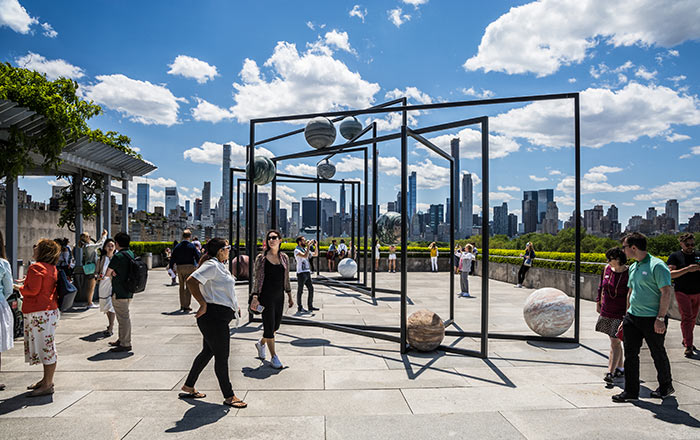Sautoir from the Shield of Achilles Collection
Designer Ilias Lalaounis Greek
Not on view
This sautoir was a gift from Ilias Lalaounis to his wife Lila. A one-of-a-kind piece, it was designed and supervised by Ilias Lalaounis during his creation of the Shield of Achilles Collection, an ambitious set of rock crystal seals that reproduce the iconography of the famed shield forged by the Greek god Hephaistos. The symbolism and meaning of the shield and its maker represent Lalaounis’s own art as a metalsmith and guiding philosophy.
From the clasp hang five chains. Each chain holds an oval pendant which is surrounded by another chain holding a rock crystal pendant with gold insets. Each inset is inspired by Minoan seal stones representing symbols of the horoscope circle. From top to bottom: Pisces (for the birth of Lila and second daughter), Sagittarius (Ilias’ mother Katina), Scorpio (first and fourth daughter Aikaterini and Ioanna), Lion (his third daughter Maria) and lower inset Libra (Ilias’ own).
The chains are hand woven from a single piece of wire. Chain weaving was used for jewelry in ancient Greece, especially in the Hellenistic period. Lalaounis revived this ancient technique in the late 1950s, but in the early 60s added a significant innovation in the mastery of its creation. Although in antiquity chains consisted of multiple, uniformly shaped links joined with one another in the so-called 'loop in loop technique'; at the Lalaounis workshops the master goldsmiths invented a new way to handle and produce the chain faster, more efficiently, creating a uniform and stronger effect: they weave a chain end-to-end, from a single piece of wire. The difference between the 'loop-in loop' and the 'single-wire' technique is the absence of soldering on the links and the continuous thread of the chain. It is estimated that for every centimeter of the chain, a good two hour work is required by an experienced master goldsmith.
This unique work depicts both Lalaounis vast inspiration from ancient Greek culture and his ability to revive ancient techniques in a modern fashion.
